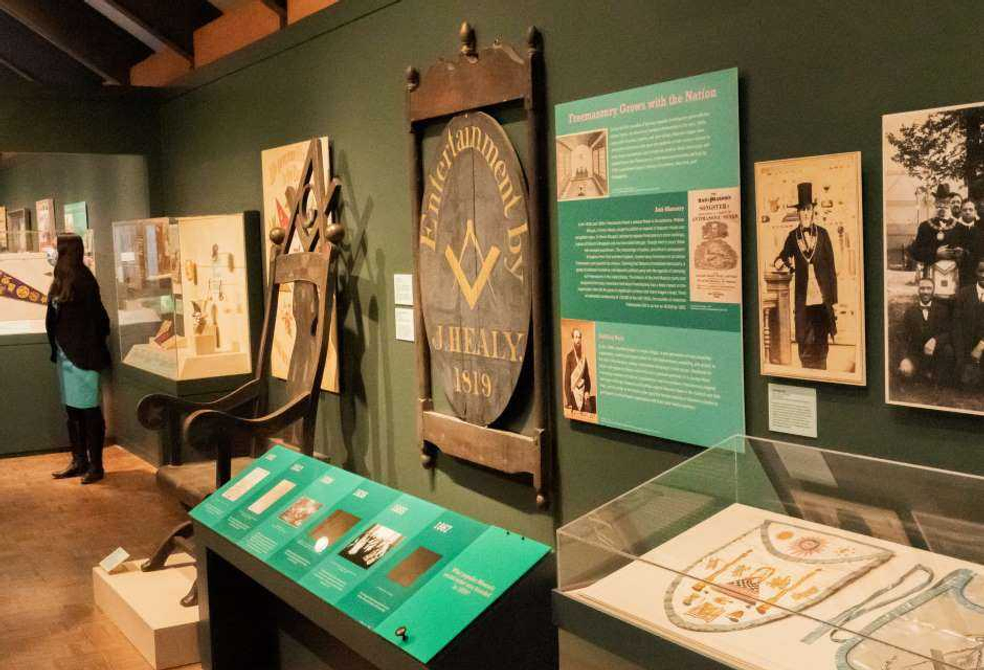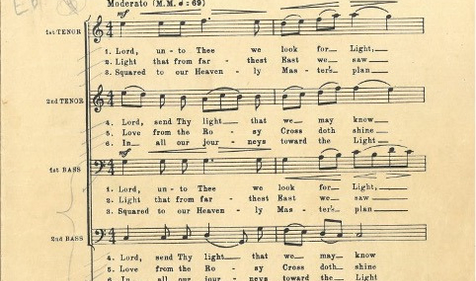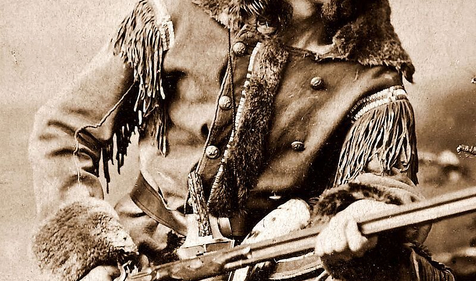The Scottish Rite Masonic Museum & Library cordially invites the public to their new interactive exhibition that showcases pivotal figures in Freemasonry and their unique contributions to American history. The Masonic Hall of Fame: Extraordinary Freemasons in American History just opened its doors and is on view through October 25, 2024, with new inductees added each year.
The Scottish Rite Masonic Museum & Library (SRMML) cordially invites you to their new interactive exhibition that showcases pivotal figures in Freemasonry and their unique contributions to American history. The Masonic Hall of Fame: Extraordinary Freemasons in American History just opened its doors and will be on view through October 25, 2024, with new inductees added each year.
At an onsite press event at the Museum & Library in Lexington, MA, Sovereign Grand Commander Peter J. Samiec explained the significance of this outstanding exhibition: "The Hall of Fame effectively does two things. One, it celebrates the diversity of our organization across cultures. Freemasonry truly is an organization that meets on the level, and I'm very proud of that. Second, it shows the role of Freemasonry across American history and its evolution. This exhibition enables us to honor Masons, both past and present."
"This really is the crown jewel of Masonic exhibitions right here at our headquarters," Commander Samiec added.
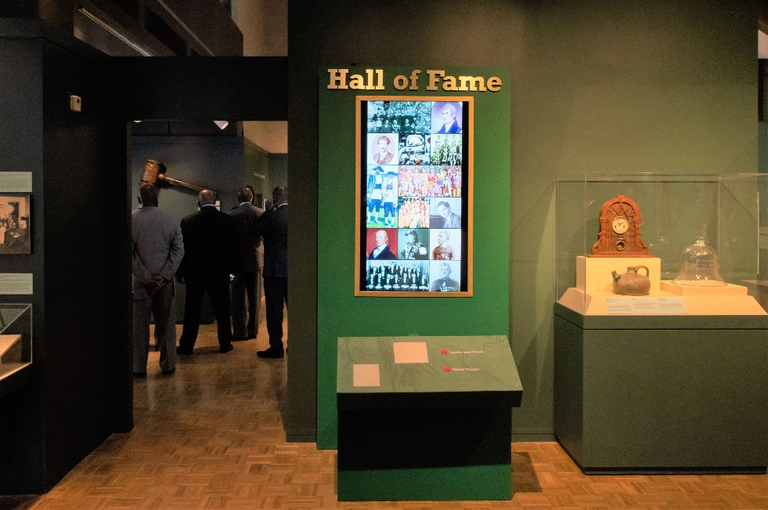
About the Inductees
Visitors to the exhibition will be introduced to – and inspired by – 10 Hall of Fame inductees. See below for more information on your Brothers who inspired history and changed the world.
- Benjamin Franklin
- George Washington
- Prince Hall
- Lewis and Clark
- Mark Twain
- Harry Truman
- John Lejeune
- Irving Berlin
- John Glenn
- John Lewis
______________________________________________________________________
Benjamin Franklin
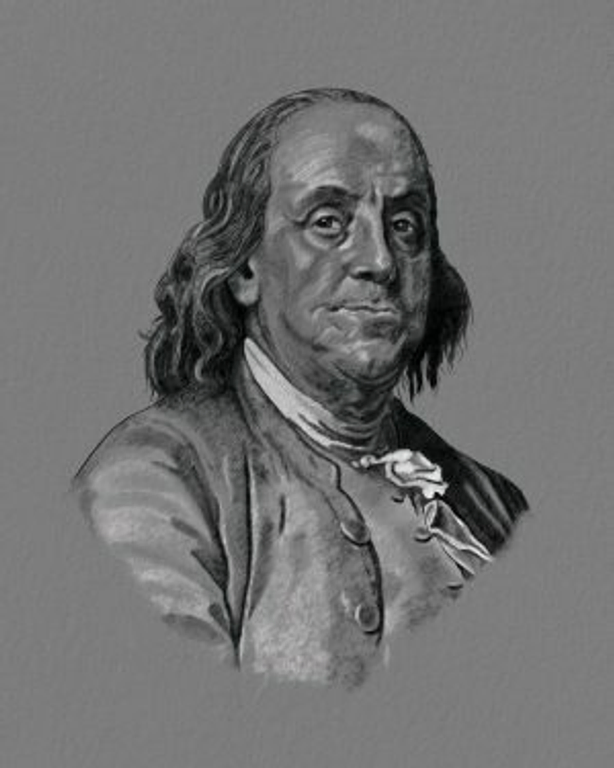
“As to the Freemasons, …they are in general a very harmless sort of People, and have no principles or practices that are inconsistent with religion and good manners.” ~Benjamin Franklin, 1738
Boston-born Benjamin Franklin (1706–1790) established what became a successful printing business in Philadelphia as a young man. From an early age, Franklin developed and followed a philosophy of continual self-improvement. He also practiced this ideal in his community, helping found and improve organizations that contributed to individual and public good, including Freemasonry.
Thinker and Diplomat
After he retired from business in his early 40s, Franklin turned his curiosity to his vast interests, including politics, science, philosophy, literature, and diplomacy. In Paris in the late 1770s, he successfully sought French support for the American fight for independence. He later served as ambassador to France for the new United States. Upon his return to Pennsylvania as a respected elder statesman, he became President of the Pennsylvania Assembly, helped shape the new nation at the Constitutional Convention, and worked to abolish slavery.
A Freemason for the Ages
Franklin became a Freemason as a young man, in 1731. Able and active, he served as Grand Master of Pennsylvania just three years later and as Provincial Grand Master of Pennsylvania in 1749. Alongside his many endeavors, Franklin held many lodge and Grand Lodge offices. Near the end of his life, his Pennsylvania brethren honored Franklin as “An illustrious Brother” of “distinguished merit” entitled to the “highest veneration.”
______________________________________________________________________
George Washington
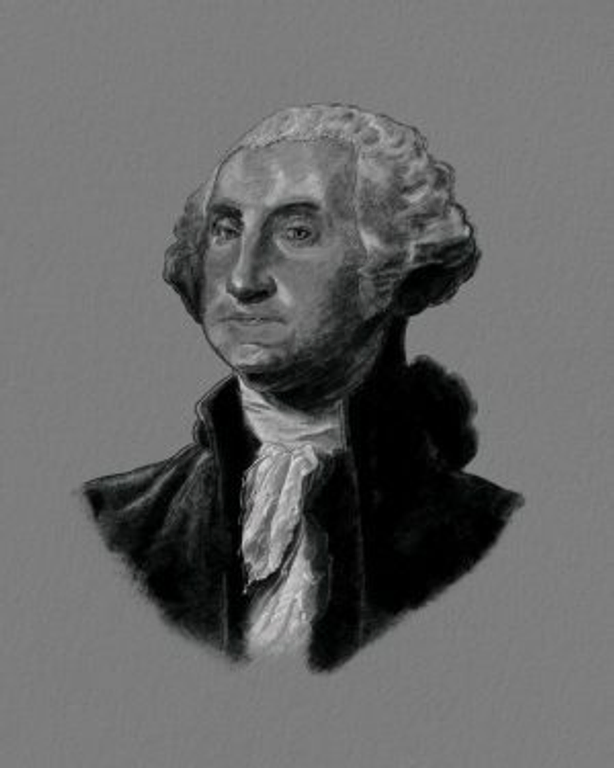
“…the grand object of Masonry is to promote the happiness of the human race.” - George Washington, 1793
Elected on February 4, 1789, George Washington (1732-1799) served as the first President of the United States from 1789 to 1797. Washington had been an officer in the Virginia militia during the French and Indian War from 1754 to 1763, a delegate to the First and Second Continental Congresses, and Commander-in-Chief of the Continental Army during the American Revolution from 1775 to 1783. He devoted his professional life to his country.
Freemason
Freemasonry played an important role in Washington’s private and public life from the time he joined Fredericksburg Lodge No. 4 in Virginia in 1752. In 1788, Alexandria Lodge No. 22, composed largely of Revolutionary War officers, petitioned the Grand Lodge of Virginia for a charter and asked Washington to be their founding lodge Master. He complied with his brethren’s request and served as Master for nearly twenty months, starting in April 1788.
Lodge Master and President
Inaugurated on April 30, 1789, Washington became the first and only United States President to also serve as Master of his lodge during his term. Although his time as Master ended in December of 1789, Washington continued to support the fraternity. While touring the country, he often met with local Freemasons and took part in special ceremonies, such as the cornerstone-laying ceremony for the U.S. Capitol in 1793. After Washington’s death in 1799, Freemasons throughout the nation participated in processions and ceremonies marking the passing of their Masonic brother. For over two centuries, Freemasons have taken great pride in Washington’s membership in the fraternity.
______________________________________________________________________
Prince Hall
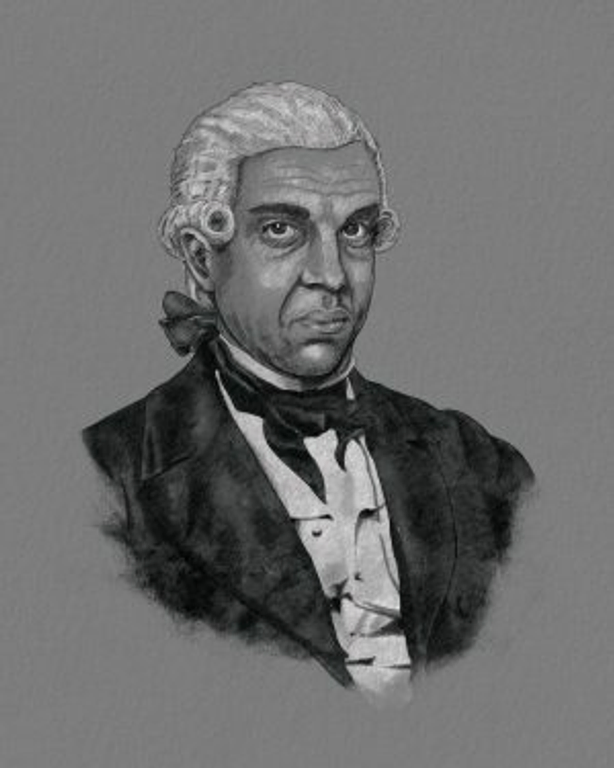
“My brethren, let us not be cast down under these and many other abuses we at present labour under: for the darkest is before the break of day…” 1797
A leading member of Boston’s African American community, Prince Hall (1735 or 1738-1807) campaigned for schools for Black children, fought for equal rights for Black Americans, and sought to abolish slavery. Prince Hall, who was barred from joining American Masonic lodges solely because of his race, founded the historically Black organization that now bears his name.
…give the right hand of affection and fellowship to whom it justly belongs…
Drawn to Freemasonry’s values, Hall tried to join St. John’s Lodge in Boston in the early 1770s but was denied membership because he was a Black man. Hall and fourteen other African Americans who had also been rejected by established Boston lodges turned to a military lodge operating in Boston, No. 441, in their quest to become Freemasons. Initiated by the lodge in 1775, Hall and his brothers met as members of the British lodge until end of the Revolutionary War.
… for they are your brethren…
In 1784, Prince Hall petitioned the Grand Lodge of England to form a new lodge in Boston. The governing body granted his request, creating African Lodge No. 459. Prince Hall helped found other lodges in Philadelphia and Providence; they worked under the charter of African Lodge No. 459. These lodges eventually joined to form African Grand Lodge. In 1847, forty years after Prince Hall’s death, members of African Grand Lodge changed their name to Prince Hall Grand Lodge, in honor of their founder. The organization that Prince Hall established continues to thrive today and Prince Hall Masons meet in thousands of lodges across the United States.
______________________________________________________________________
Lewis and Clark
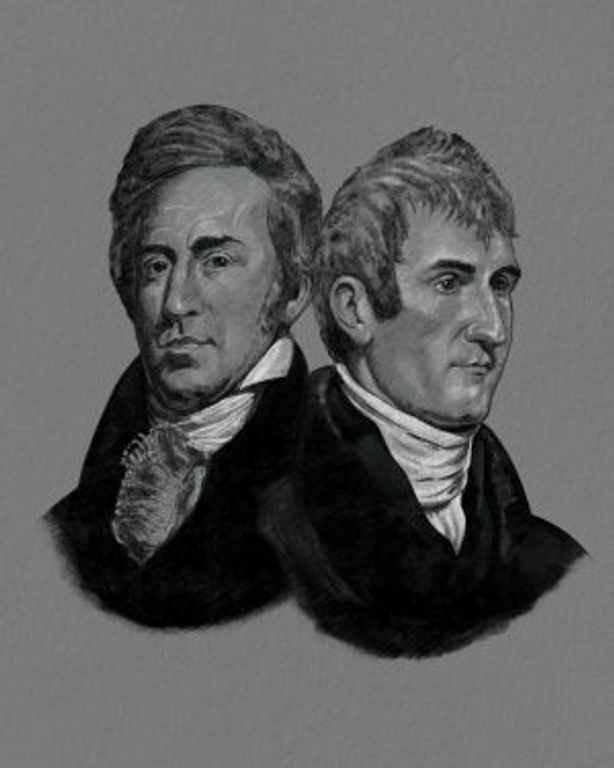
“As we passed on it seemed as if those scenes of visionary enchantment would never have an end.” Meriwether Lewis, 1805
In 1803 President Thomas Jefferson charged Meriwether Lewis (1774-1809) and William Clark (1770-1838) to lead an expedition to map and explore the land that the United States had gained with the 15-million-dollar Louisiana Purchase. This area stretched from Louisiana to what is now Montana. Jefferson asked the explorers to find a water route across the continent, make scientific observations, and establish diplomatic relations with the Native American tribes over whose land they traveled. Lewis and Clark, with the other members of the Corps of Discovery, made progress on all of these goals. As well, the keenly observed impressions that the pair recorded in their journals about geography, plants, animals, and people, have sparked the imagination of generations to dream about exploration, discovery, and the American West.
Corps of Discovery
In twenty-eight months of exploration, from 1803 to 1806, Lewis and Clark’s party traveled over 8,000 miles from St. Louis to the mouth of the Columbia River and back. Lewis and Clark’s group of enlisted men from the Army as well as an enslaved servant, York, and interpreters, including Sacagawea, a Lemhi Shoshone woman, witnessed many wonders. They also endured unpredictable weather, shortages of supplies, illness, accidents, and uncertainty. Lewis and Clark made their initial report about the expedition to Jefferson in 1806. A narrative of their expedition, based on their journals, was published in 1814.
Friends and Brothers
Lewis and Clark first met when they served together in the Army in the 1790s. Lewis became a Freemason during that time, at Door to Virtue Lodge No. 44 in Albemarle, Virginia, in 1797. In 1809, Clark took his degrees at St. Louis Lodge No. 111, where Lewis had served as founding Master just a year before. The friends’ time as members of the same lodge was cut short by Lewis’s unexpected death in 1809.
______________________________________________________________________
Mark Twain
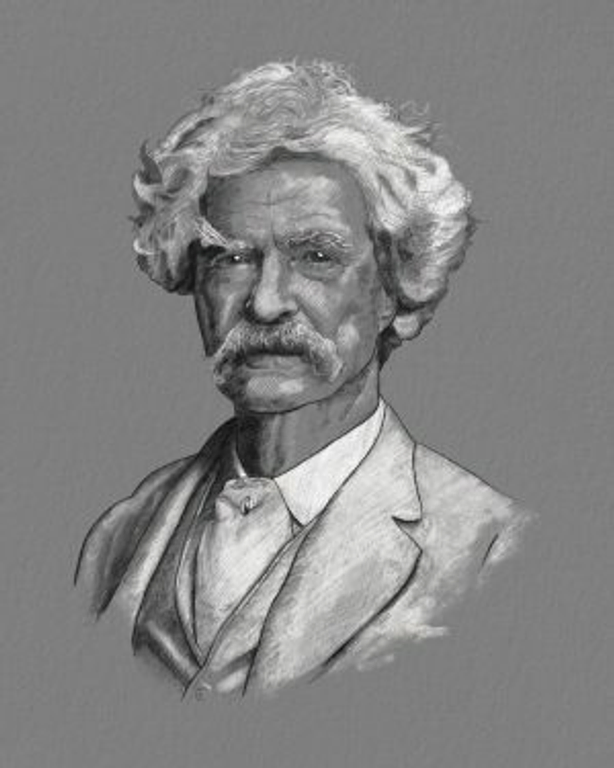
“The universal brotherhood of man is our most precious possession, what there is of it.” – Mark Twain – 1897
American author and humorist Samuel Lanhgorne Clemens (1835-1910) is best remembered by his pen name, Mark Twain. Twain is the author of many essays, short stories, and novels, including The Adventures of Tom Sawyer and its sequel, Adventures of Huck Finn. During his lifetime, Twain achieved fame on the lecture circuit and his celebrity is part of his legacy. Over the past century and a half, readers have hailed Twain as a compelling writer and a keen observer of American life. His works have been translated into more than 75 languages.
Pilot, Traveler, Writer
Twain, who grew up in Hannibal, Missouri, a town on the banks of the Mississippi, famously took his pen name from his experience as a riverboat pilot on the Mississippi. During his time as a pilot, Twain also became a Freemason. He joined Polar Star Lodge No. 79 in St. Louis – a lodge which counted many river men among its members – in 1861. Twain demitted in 1869 and did not participate in Freemasonry for the rest of his life. Often remembered today for his novels, Twain’s best-selling work during his lifetime—The Innocents Abroad—was a travel book published in 1869 and is based on Twain’s 1867 trip to Europe and the Holy Land. Twain, through his writing, humor, and satirical wit, transformed American literature and left an enduring mark on popular culture.
_____________________________________________________________________
Harry Truman
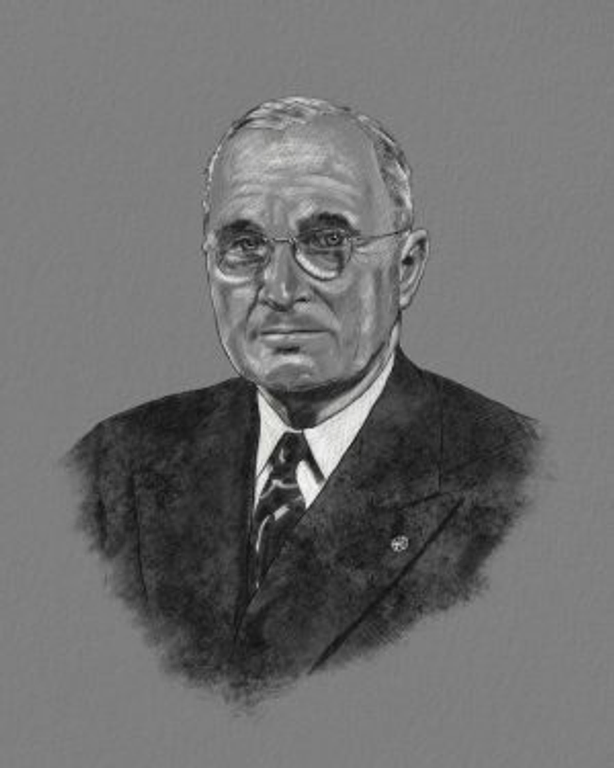
“…when you are in your hours of darkness and loneliness comes, find a Freemason, and tell him you are a son of a Freemason, and there you will find a friend.” Harry Truman – 1944
Harry S. Truman (1884-1972)—a Missouri farmer, businessman, and World War I veteran—was elected to the U.S. Senate in 1934. In 1944 voters chose Truman to be Franklin D. Roosevelt’s Vice President. Upon President Roosevelt’s death in 1945, Truman assumed the presidency during the final months of World War II. He was elected for another term in 1948.
The greatest honor…
As a young man, before he became a politician, Truman became a Master Mason at Belton Lodge No. 450, in Belton, Missouri. An energetic and dedicated Freemason, Truman held several offices in both local lodges and the Grand Lodge of Missouri. He became the state’s Grand Master in 1940, while a sitting senator. Truman received the Scottish Rite’s 33°and participated in York Rite and other Masonic bodies. On more than one occasion, he stated, “The greatest honor that has ever come to me, and that can ever come to me in my life, is to be Grand Master of Masons in Missouri.”
I have the most terribly responsible job a man ever had…
As president, known for his plain speaking and hard work, Truman desegregated the United States military, helped establish the United Nations, and supported the rebuilding of Europe after World War II. He said that deciding to use the atomic bomb against Japan was “…the hardest decision I ever had to make.” Truman also sought to stop the spread of Communism, a position that led to the U.S. entry into the Korean War in 1950. As his first full term drew to a close, Truman determined not to run again. During retirement from his life of service, Truman wrote his memoirs, helped establish the Harry S. Truman Presidential Museum and Library, and remained an enthusiastic Freemason.
______________________________________________________________________
John Lejeune

“Masonry is essentially democratic. Military or civil rank, riches, place or power do not affect a man’s standing in the Order.” John A. Lejeune, 1930
John Archer Lejeune (1867-1942) was a lieutenant general in the United States Marine Corps. In his distinguished military career, he served as commander of the U.S. Army 2nd Division, Major General Commandant of the Marine Corps and was a decorated veteran of the Spanish American War and World War I. Often referred to as the “greatest of all Leathernecks,” Lejeune received dozens of awards and accolades including the French Legion of Honor, Distinguished Service Medal for both Army and Navy service, and a World War I Victory Medal.
A Marine’s Marine
Born in Louisiana, Lejeune entered the U.S. Naval Academy in 1884 after graduating from Louisiana State University. He was dedicated to serving in the United States military and in retirement accepted a position as the Superintendent of the Virginia Military Institute from 1929 to 1937. The United States Marine Corps, recognizing his exemplary service, named Camp Lejeune, a newly opened Marine base in North Carolina, after him in 1942.
Devoted Freemason
In 1919, while serving during World War I, Lejeune became a Mason, joining Overseas Lodge No. 1 in Coblenz, Germany. He retained his membership in the lodge, which moved to Providence, Rhode Island, and was re-named Overseas Lodge No. 40. He went on to join the Scottish Rite and the Shrine in Washington, D.C. in the early 1920s. Recognized as an extraordinary Mason, fellow Freemasons in Quantico, Virginia, formed a lodge named in Lejeune’s honor in 1925. This lodge, Lejeune Lodge No. 350, and Camp Lejeune are tangible reminders of his legacy as “a Marine’s Marine” and a devoted Freemason.
______________________________________________________________________
Irving Berlin
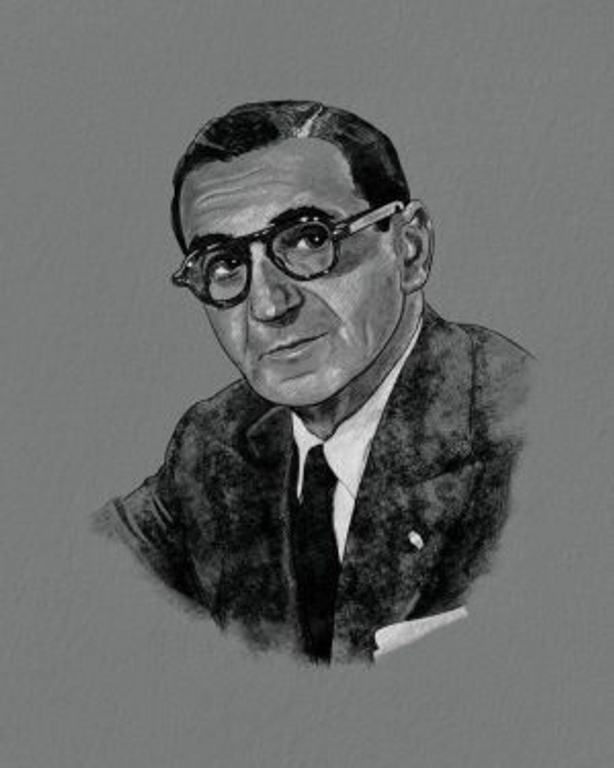
“God bless America, land that I love…” – Irving Berlin – 1938
Composer and lyricist Irving Berlin (1888-1989) is one of America’s most beloved songwriters. A list of his most popular songs includes “Oh! How I Hate to Get Up in the Morning,” “Always,” “Blue Skies,” “Puttin’ on the Ritz,” “Cheek to Cheek,” “White Christmas,” “Anything You Can Do (I Can Do Better),” and “There’s No Business Like Show Business.” Berlin’s works span generations, having been recorded by performers as diverse as Perry Como and Lady Gaga.
God Bless America
When he was five, Berlin (born Israel Beilin) and his family fled the pogroms of Eastern Europe, where they were persecuted for being Jewish, to find refuge on New York City’s Lower East Side. It was his own positive experience as an immigrant who loved his new country that inspired Berlin to sing the praises of America. His song “God Bless America”—originally composed in 1918 during his service in World War I, but not made public until Armistice Day, 1938—became so renowned that many called for it to replace “The Star-Spangled Banner” as the national anthem. But Berlin would not hear of it, saying, “There’s only one national anthem, which can never be replaced.”
Peace for All
Berlin was also a devoted Mason. He became a Master Mason in New York City’s Munn Lodge No. 190 in 1910 and a 32° Scottish Rite Mason later the same year. In 1911 he was initiated into Mecca Shrine Temple. True to Masonic ideals in myriad ways, Berlin actively worked for peace among all humankind. Among many awards he received was a 1944 honor given by the National Conference of Christians and Jews for “advancing the aims of the conference to eliminate religious and racial conflict.”
______________________________________________________________________
John Glenn

“If there is one thing I’ve learned in my years on this planet, it’s that the happiest and most fulfilled people I’ve known are those who devoted themselves to something bigger and more profound than merely their own self interest.” John Glenn – 1997
John H. Glenn Jr (1921-2016) was an American astronaut and U.S. Senator. In the early 1940s, Glenn trained as a Marine fighter pilot and flew 59 combat missions during World War II and 63 missions during the Korean War. Glenn was one of the original seven astronauts in the United States’s first human spaceflight program, Project Mercury, whose goal was to put a human into Earth’s orbit and return safely to Earth. In 1962, Glenn became the first American to orbit the earth, circling the planet three times in the Mercury capsule Friendship 7. After retiring from the Marine Corps in 1965, Glenn pursued his interest in politics. He served Ohio for four consecutive terms in the United States Senate, from 1974 until 1999.
Democratic Senator from Ohio
During his quarter-century in Congress, Glenn focused on nuclear non-proliferation and reforms against wasteful government spending. He served on both the Senate Foreign Relations Committee and the Senate Armed Services Committee. In 1998, the 77-year-old Glenn announced his plans to retire from Congress, humorously observing that “…there is still no cure for the common birthday.”
Back into Orbit
The Grand Master of the Grand Lodge of Ohio made John Glenn a Mason at sight in 1978. Twenty years later Glenn received the Scottish Rite’s 33rd degree. A month after, at age 77, Glenn returned to space aboard the Space Shuttle Discovery, becoming the oldest person to go into space, a record that stands. During the nearly nine-day mission, Glenn was the subject of several scientific experiments intended to observe the effect of space travel on someone of his advanced age. As a space pioneer and a Senator who sought to legislate toward a better world, John Glenn has inspired generations.
______________________________________________________________________
John Lewis
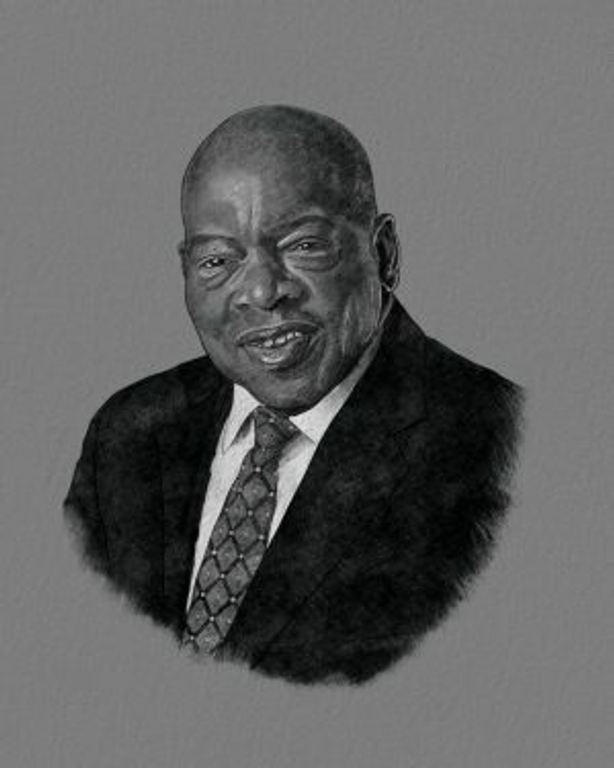
“When you see something that is not right, you must say something. You must do something.” John Lewis - 2020
A leader in the fight for civil rights and a politician, John Lewis (1940-2020) brought hope to countless Americans with his commitment to fairness and equality and with his optimism and courage. Born and raised in rural Alabama, Lewis heard a speech by Dr. Martin Luther King broadcast on the radio when he was a teenager that helped inspire him to become involved with the civil rights movement.
Freedom is not a state; it is an act
As a seminarian and college student, Lewis organized sit-ins and boycotts, following a philosophy of nonviolence. He adhered to this philosophy throughout his life. Lewis was at the center of the civil rights movement as a Freedom Rider, chairman of the Student Nonviolent Coordinating Committee, one of the organizers of the Selma to Montgomery marches, and a speaker at the 1963 March on Washington.
I urge you to answer the highest calling of your heart and stand up for what you truly believe
From 1970 to 1977, Lewis headed up the Voter Education Project, helping register four million minority voters during his tenure. First elected a U.S. Representative from Atlanta, Georgia, in 1986, Lewis served 17 terms. In Congress he fought for voters’ rights and human rights, was a Democratic Party leader, and was described by colleagues as “the conscience of the Congress.” While a congressman, Lewis was made a Mason at sight at H. R. Butler Lodge No. 23, PHA, in Atlanta in 1999. He received the 33° from the United Supreme Council at Atlanta in 2011 and was a member of the Ancient Egyptian Arabic Order Nobles of the Mystic Shrine. As an activist, legislator, and Freemason, Lewis imagined and worked to bring about a better world for all people.
______________________________________________________________________
About SRMML
The Scottish Rite Masonic Museum & Library is dedicated to presenting exhibitions and programs on a wide variety of topics in American history and popular culture. The Museum is located at 33 Marrett Road in Lexington, at the corner of Route 2A and Massachusetts Avenue. Admission and parking are free. For further information, contact the Museum at (781) 861‑6559 or visit the web site at www.srmml.org.
Related Stories
Discover additional Scottish Rite blogs and news on this topic.
